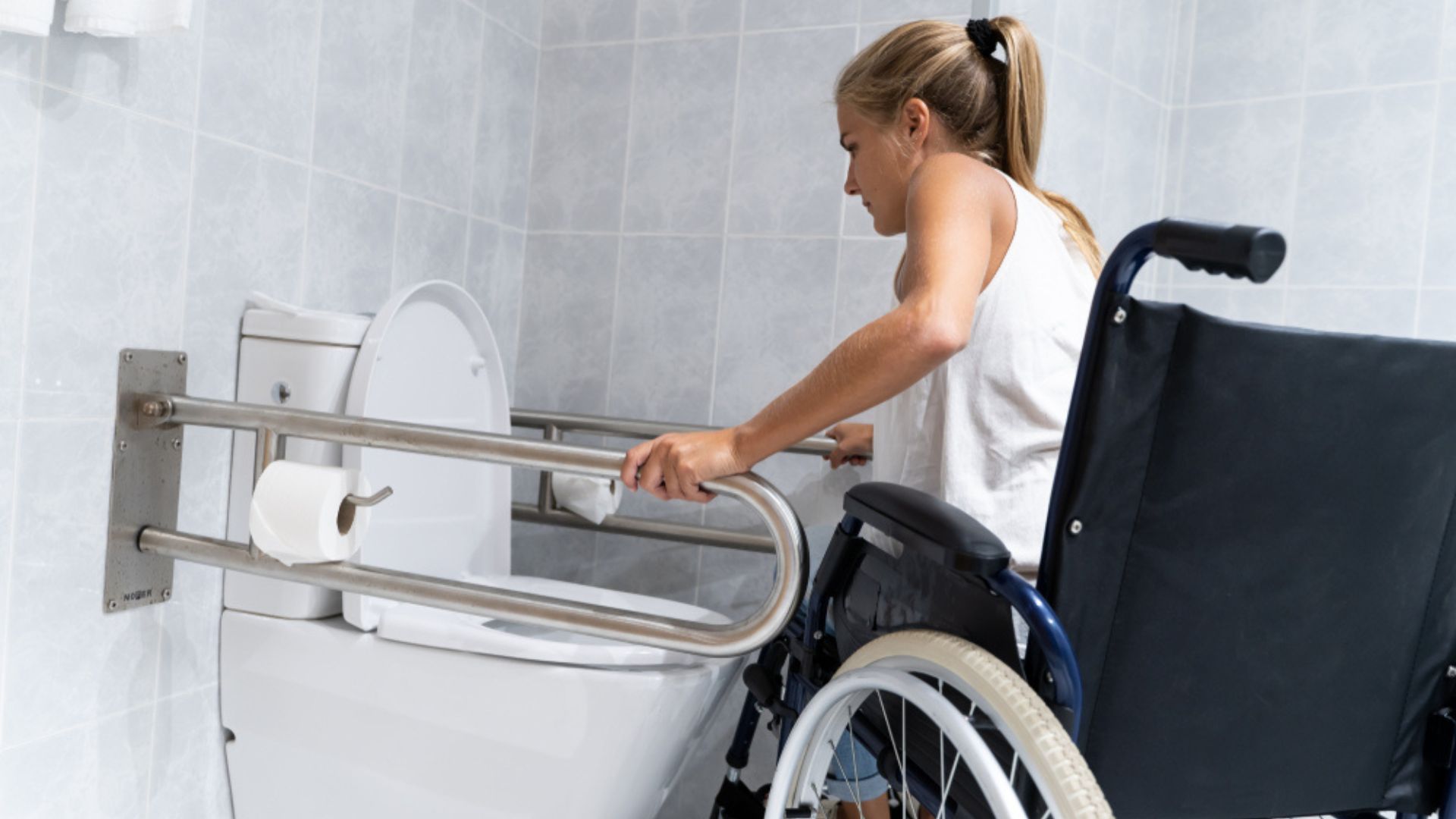Pelvic floor dysfunction is a significant concern for individuals with spinal cord injuries, affecting their quality of life in multiple ways. The pelvic floor, a group of muscles supporting the pelvic organs, plays a vital role in bowel and bladder control as well as sexual function.
When a spinal cord injury disrupts the nerve signals between the brain and these muscles, it can lead to various complications. Symptoms like urinary and fecal incontinence, pelvic pain, and sexual dysfunction are common, making daily activities challenging.
In this blog, we will discuss the impact spinal cord injury has on the pelvic floor, and the common symptoms that arise. In addition, we explore effective strategies for pelvic floor dysfunction treatment after a spinal cord injury, highlighting the importance of a multidisciplinary approach involving physiotherapists and other healthcare professionals.
Table of Contents:
- How does spinal cord injury impact pelvic floor function
- Symptoms of pelvic floor dysfunction after spinal cord injury
- Management of pelvic floor dysfunction after spinal cord injury
- Pelvic floor physiotherapy and spinal cord injury
- Conclusion
How Does Spinal Cord Injury Impact Pelvic Floor Function
The pelvic floor has many different functions including supporting organs, maintaining bowel and bladder function and facilitating sexual function.
When there is a neurological injury, such as a spinal cord injury, the signals between the central nervous system (the brain and spinal cord) to various parts of the body are disrupted. Signals that control the muscles of the bowel, bladder and sexual function can be disrupted and therefore lead to complications.
There are over 4,500 cases of spinal cord injuries per year in Canada. For these individuals, dysfunction in the pelvic floor can manifest in different ways, including urinary or fecal incontinence, changes in urinary or fecal frequency, pelvic pain, and sexual dysfunction.
You may also enjoy reading: The Pelvic Floor Dysfunction and Low Back Pain Connections
Symptoms of Pelvic Floor Dysfunction After Spinal Cord Injury
Common symptoms that people with spinal cord injury experience can include:
- Urinary urgency: the urgent need to urinate despite not having a full bladder
- Fecal urgency: the sudden need to empty one’s bowels
- Urinary incontinence: loss of bladder control, leading to leakage
- Fecal incontinence: loss of bowel control, leading to uncontrolled leakage of stool
- Urinary retention: inability to empty the bladder completely
- Pelvic pain: this may be a result of muscle spasms, nerve pain or complications from prolonged catheter use or bowel management procedures
- Sexual difficulties: persistent or recurrent problems such as erectile dysfunction, decreased libido
- Frequent urinary tract infections (UTIs): due to incomplete emptying and residual urine in the bladder
- Constipation: difficulty passing stool regularly
- Bowel dysmotility: irregular bowel movements or ineffective bowel emptying
- Pelvic organ prolapse: due to the damage of the pelvic floor muscles, the bladder or the rectum can drop from their normal position leading to a discomforting sensation
You may also enjoy reading: Wheelchair Accessories and Devices for Winter Weather
Pelvic Floor Dysfunction Treatment After Spinal Cord Injuries
Due to the complexity of spinal cord injuries and various concerns that arise within this population, pelvic floor issues often require a multidisciplinary approach. Their pelvic floor dysfunction treatment plan might include some of the following healthcare providers:
Urologists
Urologists diagnose and treat bowel and urinary tract issues in spinal cord injury patients, using medical and surgical interventions to manage incontinence, retention, and infections.
Physiotherapists
Physiotherapists enhance pelvic floor function through strengthening exercises, biofeedback, and pain management techniques to improve bowel/bladder habits and reduce discomfort. See additional information on pelvic floor physiotherapy for spinal cord injuries in the next section.
Medical doctors
Medications such as antispasmodics and analgesics help manage spasticity and pain, improving muscle control and reducing discomfort in spinal cord injury patients.
Catheterization and/or toileting routines
Catheterization and consistent toileting routines regulate bladder and bowel movements, preventing retention and reducing infection risks.
Nutritionists
Bowel programs include dietary adjustments and scheduled routines to ensure regular bowel movements and prevent constipation and incontinence.
Sex therapist
Sex therapists support spinal cord injury patients by addressing sexual dysfunction and emotional issues, providing adaptive techniques and fostering intimacy.
You may also enjoy reading: Maintaining Heart Health with Spinal Cord Injury
Pelvic Floor Physiotherapy and Spinal Cord Injuries
Pelvic floor physiotherapy for neurological conditions is individualized to each patient depending on their presentation and goals. During the initial assessment your physiotherapist will take a history of your condition, symptoms and treatment to date for your condition.
They will also ask specific questions to explore pelvic floor issues such as bowel and bladder concerns. Questions can include how often you are going to the bathroom, what your toileting routines are like, if you are experiencing any pain and how these issues are impacting your day-to-day function.
Your physiotherapist will then do a physical examination. They will look at your posture and breathing patterns which can provide insight to pelvic floor function. Core function and strength can also be assessed. In addition, pelvic floor physiotherapists have additional training to be able to complete an internal exam to assess the strength, coordination and tone of the pelvic floor muscles.
Following the assessment, your physiotherapist will develop an individualized pelvic floor dysfunction treatment plan. As everyone has unique goals and presentations, the treatment plan will differ between individuals. Some common treatment approaches that are utilized include:
- Pelvic Floor Exercises: Exercises can be prescribed to strength the muscles of the pelvic floor, and exercises can also be prescribed that help relax the pelvic floor muscles for those that have overactive muscles. Your physiotherapist will work with you to ensure you are completing these exercises correctly to achieve the goal of the exercise.
- Posture and Breathing Techniques: the pelvic floor works in coordination with the diaphragm. Thus, your physio might give you exercises to enhance your posture and breathing which can positively impact the pelvic floor.
- Bowel and Bladder Diaries: Your physiotherapist might ask you to record how often you are going to the bathroom, what your water intake is like and what food(s) you are eating. Based on your habits your physiotherapist can provide recommendations for times voiding and bladder retraining, strategies to reduce constipation and promote regular bowel movements and education on dietary adjustments to help achieve these goals.
- Lifestyle Modification: based on the findings on your bowel and bladder diary, your physiotherapist can provide you with guidance on fluid intake and dietary choices.
- Functional Electrical Stimulation (FES): the use of electrical impulses to help activate the pelvic floor muscles might be used in order to improve strength.
- Manual Therapy: soft tissue release and trigger point release can alleviate pain and reduce tone in the pelvic floor.
- Education: if pain is one of your main concerns, your physiotherapist may provide you with strategies to help reduce pain. This can include the use of TENS, heat/cold therapy, pain education and relaxation techniques
You may also enjoy reading: Sport in Spinal Cord Injury Rehabilitation
Conclusion
Through pelvic floor dysfunction treatment an individual can experience improved bowel and bladder control, reduced pain and an overall better quality of life. Patients can become empowered with skills and knowledge in order to manage their symptoms effectively and improve their activities of daily living.
If you or someone you know might benefit from pelvic floor physiotherapy, especially as it relates to spinal cord injury rehabilitation, give us a call at the clinic for a complimentary consult call to discuss if this can be an option for you.
Written by

















